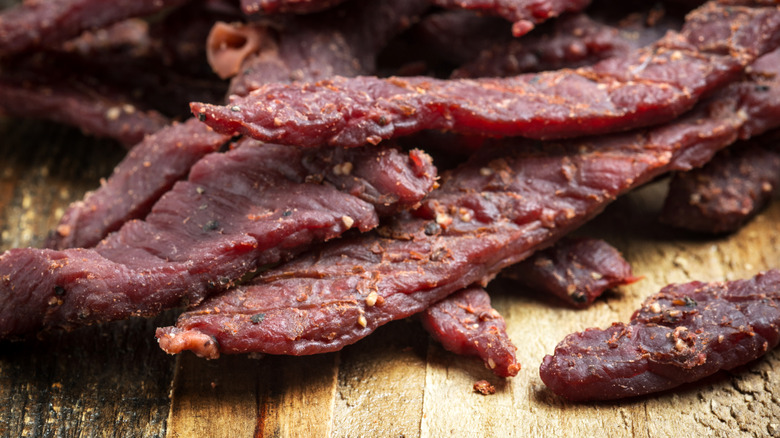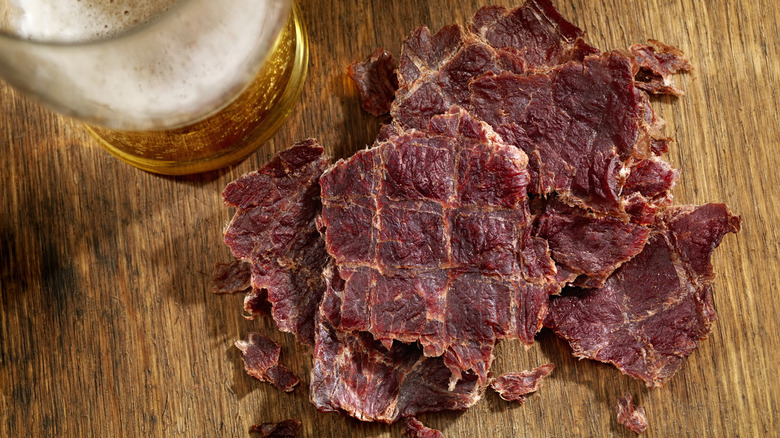Here's How Long Beef Jerky Lasts In Your Pantry Vs Fridge
Beef jerky is a great snack to have on hand both for eating on a hiking trail and in the comfort of your own home. However, while these dried cuts of meat may seem like they'll last forever, they do actually expire and how you store them can play a significant role in their freshness.
Unopened, commercially processed beef jerky can remain fresh for up to a year in your fridge or pantry and for two years if frozen, though its flavor and quality can be impacted by freezing. This is because commercial beef jerky is stored in airtight packaging filled with nitrogen before sealing to remove any oxygen. However, once open and exposed to air, beef jerky can be kept in the refrigerator for about two weeks, where the temperature will help prevent the growth of bacteria. If left at room temperature in your pantry, you can expect it to keep for around three days, but it will begin to lose some of its freshness.
Homemade jerky is another story, though, and its shelf life will depend on the meat used to make it, some cuts of beef are better for making jerky, and the methods used to make it. That said, the fridge is the best place for homemade beef jerky as this will preserve its quality and flavor for longer. If vacuum sealed, homemade beef jerky can last for several months unopened. In other containers, it can last between three and five days or a week in the refrigerator.
The surefire signs your jerky has gone bad
Although beef jerky can last a long time in the proper conditions, there are two things that contribute the most to its spoilage: moisture and air. One reason why jerky lasts so long is because of its lack of moisture, but when moisture is reintroduced, it can facilitate the growth of microorganisms and kickstart the spoiling process. Likewise, oxidation from exposure to air can impact jerky's flavor, texture, and color. It can also make any fat in the meat begin to go rancid.
If you've had an opened package of jerky sitting around for a while, either in your pantry or your fridge, it's always worth checking it out before eating it, especially if you don't know how old it is. While visible mold is a dead giveaway, other signs can be more subtle. Even if your jerky looks okay, if it smells sour or rancid, that's a sign it's not safe to eat. Similarly, if the jerky feels slimy to the touch or wet, you're better off not eating it. It's always better to be safe than sorry, and anyway, jerky is really easy to make in the oven , so tossing out your old stash just gives you a reason to make some fresh!

